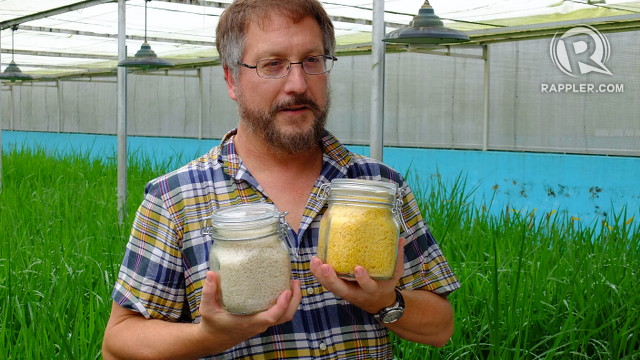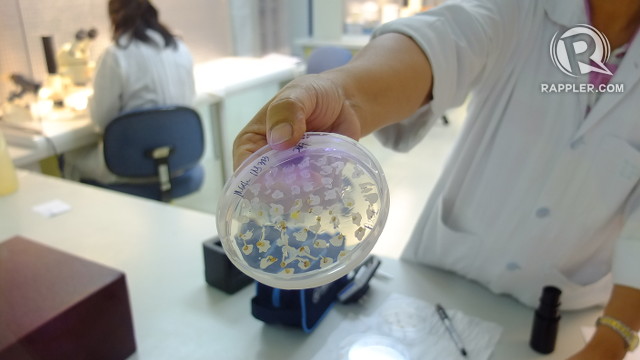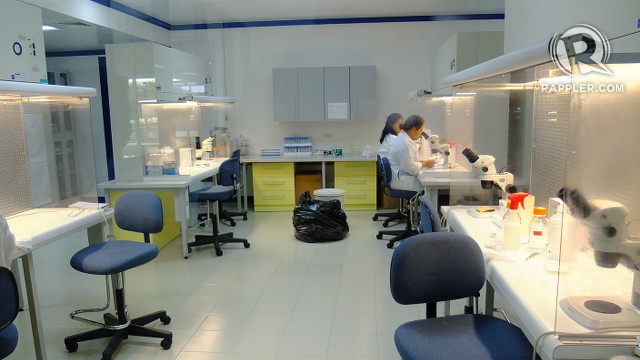SUMMARY
This is AI generated summarization, which may have errors. For context, always refer to the full article.
MANILA, Philippines – The Philippines is the final battleground for genetically-modified organisms or GMOs.
With the banning of field trials of GM eggplant – known as Bt eggplant – by the Court of Appeals, both anti- and pro-GMO lobbyists are gearing up for the next battle, the imminent approval of Golden Rice currently being developed in the Philippines.
READ: CA upholds GM eggplant field trials ban
“The global spotlight is now in the Philippines to see what’s going to happen with Golden Rice. There’s a clear perception that if Golden Rice is approved, it will be very hard to stop the technology in other parts of the world,” said Wayne Parrot, a scientist flown into the Philippines last September by the US embassy to make a rallying call for GMOs.
“The anti-GMO lobbyists are really looking at Golden Rice as the last barrier between widespread use of the technology and keeping it reserved. As Golden Rice gets closer to approval you can expect every last attempt will be made to stop it. We’re ready.”
‘Golden boy’ of GMOs
Golden Rice is rice genetically-engineered to contain beta carotene extracted from corn and a soil microorganism. Beta carotene is a precursor of Vitamin A which is needed for healthy eyesight. It is the beta carotene that gives the GM rice its distinctly yellow or “golden” color.
Genetic engineering is the process of transferring genes from one organism to another for the second organism to express desirable traits like higher nutritional value, resistence to pests and herbicides and resilience to drought and flooding.
Golden Rice is currently being developed by the International Rice Research Institute (IRRI) in Los Baños, Laguna. Having passed testing in the laboratory, screenhouse and confined field test, it is now undergoing multi-location field trials in different parts of the Philippines.
It needs to pass 3 more tests before it can reach the plates of consumers: regulatory safety assessment, market test, and nutrition study.
Pro-GMO advocates are crossing their fingers for Golden Rice to pass the field trials which have been conducted since 2010. With the favorable results of the tests, the next phase of the trials are in the horizon, said Raul Boncodin of IRRI.
Once it is approved for planting as crops and human consumption, Golden Rice seeds will be turned over to the Philippine Rice Research Institute of the Department of Agriculture, which will in turn, distribute it to seed companies who will develop the rice and sell to farmers, Boncodin added.
Vested interests?
But only last August, the anti-GMO group Masipag composed of farmers and scientists uprooted a Golden Rice test field in Pili, Camarines Sur.
Many of the anti-GMO faction are not convinced by the “golden boy” image of Golden Rice as a solution to Vitamin A deficiency, a condition that has caused blindness in 500,000 children globally according to the World Health Organization.
“Golden Rice is a poster boy or Trojan horse for GMOs. In the guise of humanitarian objectives, it wants to make GMOs more acceptable to the general public,” said Chito Medina, a scientist and National Coordinator of Masipag (Magsasaka at Siyentipiko sa Pagpapaunlad ng Agrikultura), a coalition of farmers and scientists opposing GMOs in the Philippines.
GMO opponents fear the possible health and environmental impacts of planting and eating GM crops. They also allege that companies developing GMOs like Monsanto and Syngenta are out to control the world’s agricultural system with more expensive seeds and lucrative patents of GMOs.
“Seeds are a US$32-billion business per year. You can imagine the interest behind that,” said Medina.
READ: PH most ‘GMO-friendly’ country in Southeast Asia?
But Parrot counters that patents expire and that the patent for Golden Rice was given to IRRI by developer Syngenta for free for the benefit of farmers worldwide.
The Philippines is the USA’s largest market for GMOs in Southeast Asia, according to Agricultural Counselor of the US embassy Philip Shull.
At the same time, the US “took about 30% of Philippine food and agricultural exports. This wonderful relationship will continue well into the future,” he added.
Regulating GMOs
Medina laments how the Philippines has become one of the countries with the most GMO-friendly regulations. More than 44 GMOs have been approved by the government for direct consumption, food processing, and planting as crops.
Thelma Soriano from the GMO-regulating body Bureau of Plant Industry (BPI) under the Department of Agriculture admitted to Rappler that the agency “has never encountered denying a GM crop for direct use for food, feed or for processing.”
But GMO supporters celebrate the approvals, saying they allow Filipinos to be among the first to benefit from GMOs like Golden Rice.
“In the Philippines, two million women and children are affected by Vitamin A deficiency,” said Bruce Tolentino, deputy director of IRRI.
“We need to deal with that and the fact is that Filipinos eat a lot of rice. On the average, we eat 123 kilos per head per year. Since rice is so much a part of our diet, why don’t we improve it?”
He also said GMO regulation in the Philippines is “the most strict and most advanced in the world.”
“We need science to solve the food security problems brought about by rapid population growth. We need to solve the problems brought about by climate change and what is happening to the environment. We need science to make sure that our family, friends and children have nutritious food that they need.
“What we need to do is to discover and try it out. We need to allow science to proceed. We need to do the research necessary to answer questions.” – Rappler.com
Add a comment
How does this make you feel?




There are no comments yet. Add your comment to start the conversation.